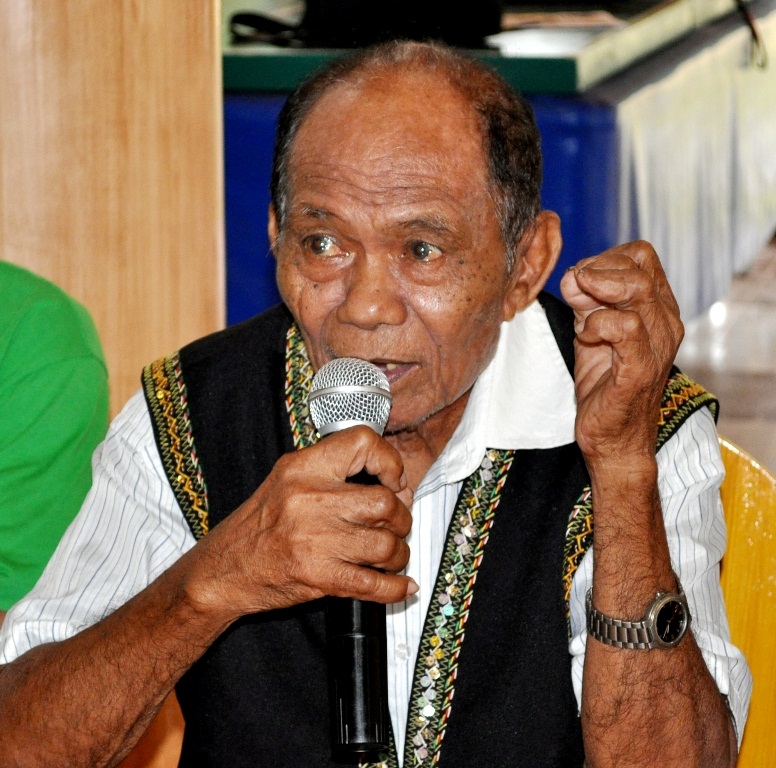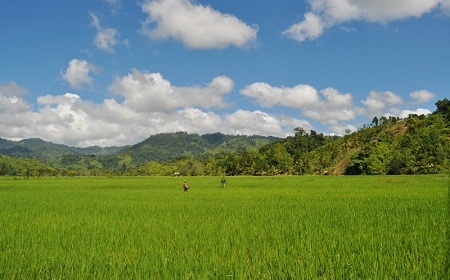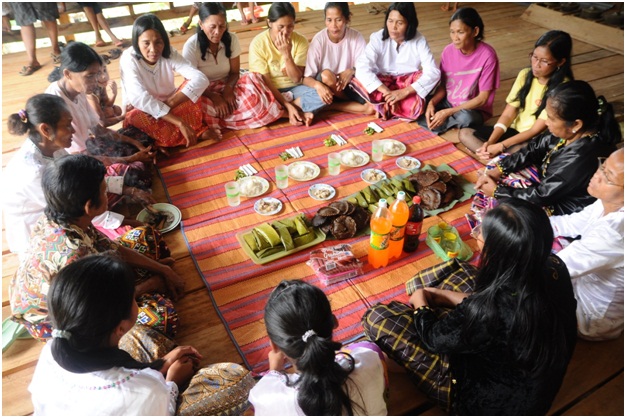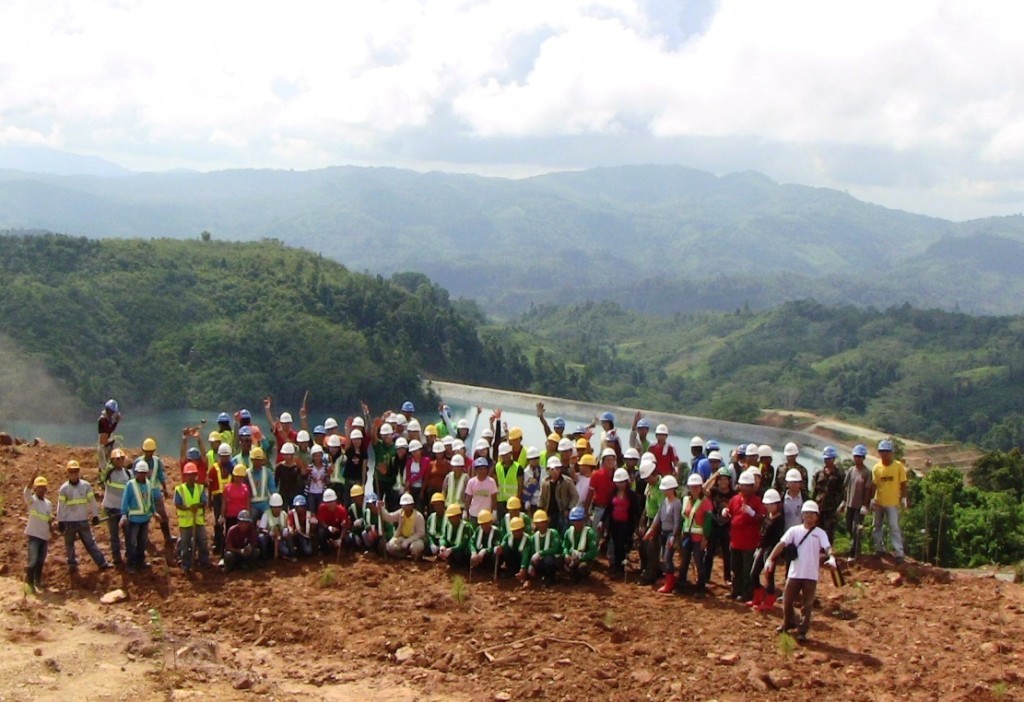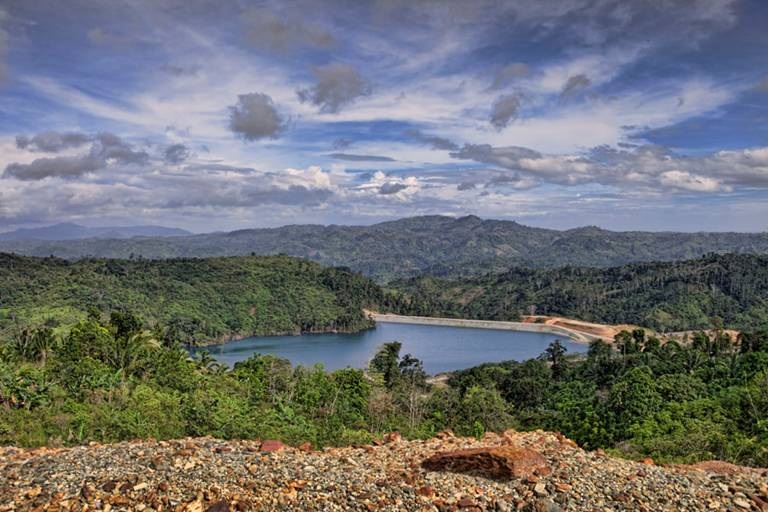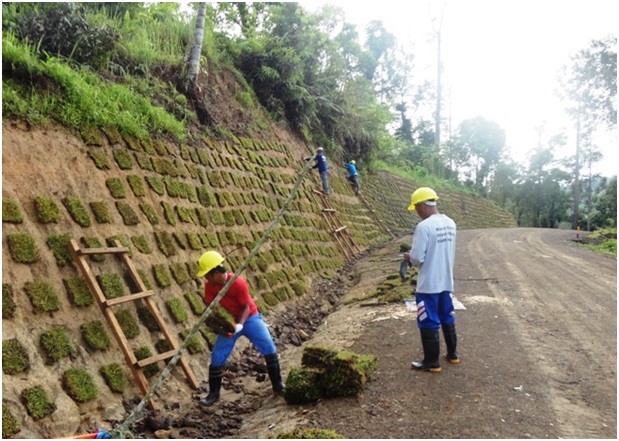Canatuan Project `a partnership between the Philippines and Canada’

Department of Environment and Natural Resources (DENR) Secretary Angelo T. Reyes and Canadian Ambassador to the Philippines Peter Sutherland said the inauguration of TVI’s P170 million (US $3.3 million) Gossan Tailings Dam symbolizes the company’s concern for the environment and adherence to good corporate citizenship. The top officials of the two governments graced the inaugural ceremonies at TVI’s Canatuan Project in Siocon, Zamboanga del Norte, highlighted by a dedication and blessing ritual conducted by the Council of Elders of the Subanon indigenous people.

Located approximately 800 meters from the mine workings, the Gossan Dam represents a major environmental management control feature within the overall Canatuan gold and silver mining operations. Consisting of a dam, overflow spillway, impoundment area and an upstream diversion dam, the Gossan Dam was constructed to provide a controlled and safe disposal facility for tailings produced by the mine and milling operations. Designed and supervised by a leading Canadian/international engineering firm, the Gossan dam is “as good as any such structure anywhere in the world,” said TVI Corporate Advisor John Ridsdel, welcoming the Sectretary and the Ambassador to the inauguration ceremony.
Reyes said TVI Canatuan meets the three criteria of a responsible mining operation: it contributes to economic growth, creates social equity, and participates in the protection and sustainable development of the country and its resources. He acknowledged TVI’s efforts in providing basic services to the Subanon title holders of the Canatuan ancestral domain in the areas of health, education and livelihood.
“We see here a company that is from all indications practicing responsible mining, contributing to the economic growth not only of the community but also of the entire country; serving the community and ensuring that the environment is not damaged, but is protected and, subsequently, rehabilitated,” Reyes noted.
Sutherland said that “mining issues in the Philippines and in Canada are almost the same,” including those that pertain to environmental safety as well as working with and communicating in local and indigenous host communities.
“We are very pleased that TVI has set a good example here in the Philippines,” Sutherland added. “In Canada, mining is a big and important business and TVI is part of that. And because our companies are involved not just in Canada but also around the world, being a good corporate citizen is absolutely essential. It’s not only the right thing to do. It is good business. We are happy of what TVI is accomplishing here…It shows that mining and environmental protection are not incompatible.”
Siocon Mayor Ceasar Soriano expressed satisfaction over what TVI has been doing in the municipality. “We appreciate TVI’s efforts to assure the people of Siocon that everything will be alright. We take note of this great effort in order to help the people of Siocon.”
Reyes continued, “when we invite companies to invest in the Philippines we tell them: `come here, invest your money, bring expertise, bring technology, but engage in responsible mining and impose the same rigid standards that you impose on yourselves when you explore and develop in your own countries.We see that this company is observing the rigid standards for mining operations being imposed by the Philippine government.”
Reyes and Sutherland also awarded to a representative of the Special CAFGU Active Auxillary (SCAA) the certificate of completion of the Human Rights special training program that SCAA personnel had attended to ensure heightened sensitization of human rights issues and management on the part of the company’s security personnel. The training – a joint effort of the Commission on Human Rights (CHR), the Armed Forces of the Philippines (AFP), and TVI – is a first for the Commission and the mining industry. CHR Education and Research Division Chief Armando Borromeo was on hand to witness the awarding.
Reyes pointed out that the SCAA is under the control of the 44th Infantry Battalion of the AFP’s Southern Command of which he was commander prior to becoming the AFP Chief of Staff. He became Secretary of National Defense and of the Interior and Local Government before assuming his current post at the DENR.
Construction of the Gossan Dam commenced in April 2005, and the first stage was completed and commissioned in September 2005 at 25 meters in height. The second stage construction commenced in December 2005 at the end of the rainy season, and an additional 17 meters of embankment was placed. The dam reached the maximum height of 42 meters on April 2, 2006.
Further protection is provided by a smaller earth fill dam and spillway known as the Diversion Dam, which protects the natural stream of Canatuan Creek from mixing with the water and tailings stored in the Gossan Dam impoundment. This further increases the factor of safety and minimizes the risk of dam overtopping.
Design criteria for both the Gossan and Diversion Dams were based on Philippine standards and regulations as well as various operations and engineering criteria used in Canada.
Both spillways were designed to pass what are known as the Probable Maximum Flood (PMF) and Maximum Credible Earthquake (MCE), representing maximum rainfall and maximum earthquake events, respectively, that could occur at the mine site. PMF applied is approximately 12 times the maximum daily rainfall ever recorded in Canatuan and is most likely to occur once every 1,000 years. MCE analysis is based on the area’s geologic conditions and the proximity of faults. This approximates an earthquake event having a 1,000-year probability and an intensity of about 8.5.


